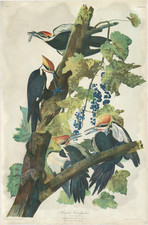Canvas backed Duck. Fulligula Vallisneria. Steph. 1, 2, Male, 3, Female. View of Baltimore, drawn from nature by John James Audubon and engraved, printed, and colored by Robert Havell Jr. in 1836, is a compelling portrayal of avian elegance set against the historical backdrop of Baltimore. This aquatint showcases three striking canvas-backed ducks in the foreground, with a vivid depiction of Baltimore across the water, offering a harmonious blend of ornithological art and scenic beauty.
The canvasback duck (Aythya valisineria) is a North American diving duck distinguished by its unique sloping profile. With a long, tapered bill and a striking red head sitting atop a white back and neck, this duck is easily recognizable and admired by both bird enthusiasts and waterfowl hunters. Primarily inhabiting freshwater lakes, rivers, and marshes, the canvasback's diet consists largely of aquatic plants, particularly wild celery, from which its scientific name is derived. Over the years, factors such as habitat loss and hunting have led to fluctuations in its population, making conservation efforts crucial to ensuring its continued survival.
The presence of Baltimore in the background is emblematic of the intricate relationship between the natural world and human civilization. Baltimore, a burgeoning city of the mid-19th century, known for its rich history and vibrant port, serves not only as a geographical point of reference but also as a nod to Audubon's personal experiences. His acknowledgment of Baltimore's hospitality and the city's citizens' generosity during a particularly trying episode of political unrest further deepens the historical significance of the piece. In the Ornithological Biography, Audubon explains his reason for including the view of Baltimore:
In the Plate are represented two Males and a Female. In the background is a view of Baltimore, which I have had great pleasure in in- troducing, on account of the hospitality which I have there experien- ced, and the generosity of its inhabitants, who, on the occasion of a quantity of my plates having been destroyed by the mob during an outburst of political feeling, indemnified me for the loss.
The male in the lower left of the image reaches out from the bank to snatch a waterbug hiding on a leaf of grass. In the water, another male holds himself with an almost regal poise redolent of fine decoy. A female is shown on the rocks above, bowing her head toward the water.
John James Audubon's Double Elephant Folio Birds of America: The Havell Edition (1827-1838)
The present hand-colored original Audubon print comes from the Havell double elephant folio edition of Birds of America, the greatest color plate book ever made. This work was Audubon's magnum opus and was published at immense expense over almost a decade, between 1827 and 1838. The Havell Edition of Birds of America included 435 hand-color aquatinted plates, and it is estimated that between 165 and 175 complete sets were produced. Today, a given individual image probably exists in no more than 60 loose examples, though for some plates the number will be much lower. Audubon aquatint engravings from the Havell Edition were printed on J. Whatman wove paper, the best paper in the world at the time - and to this day an exceptional fine art paper. The sheets of paper were approximately 26½ x 39½ inches untrimmed. Importantly, they all feature watermarks that are variations on "J.Whatman" or "J.Whatman / Turkey Mill" with the date of manufacture sometimes appended. In addition to the name of the bird depicted (and sometimes its gender, age, and botanical notes as well) Audubon's name and the name of the engraver also appear printed on Havell Edition plates. On the lower left side is printed "Drawn from nature by John James Audubon F.R.S. and F.L.S." (Fellow of the Royal Society of London and Fellow of the Linnaean Society). The only exception to this is Plate 64, Swamp Sparrow, in which Lucy Audubon is credited. On the lower right side is printed "Engraved by" (in a few cases the words "Engraved and colored by" or "Retouched by" appear) followed by the name W.H. Lizars or Robert Havell, Jr. (Sometime after his father's death in 1832 Robert Havell, Jr. dropped the Jr.)
Robert Havell Jr. was the principal engraver of Audubon's Birds of America, perhaps the most significant natural history publication of all time.
Havell's aquatint engraving of all but the first ten plates of John James Audubon's Birds of America is now recognized as a significant artistic achievement in its own right and an essential component of the success of Birds of America. He and Audubon became close friends and associates during their lengthy collaboration.
In 1839, Havell went to America at the invitation of Audubon, first residing in Brooklyn. He settled in Ossining on the Hudson River and later moved to Tarrytown, New York, living there from 1857 through his remaining years. Although Havell continued to work in aquatint and engraving (primarily city panoramas), he devoted most of his attention to painting the countryside of the Hudson River valley. He travelled frequently in a homemade horse-drawn trailer, sketching and taking notes and translating his sketches into larger oils.
Robert Havell Jr. is considered a member of the Hudson River School of American painters.
John James Audubon (1785-1851), born Jean-Jacques Rabin in Haiti on April 26, 1785, was a Franco-American ornithologist, naturalist, and painter, celebrated for his detailed illustrations of North American birds in their natural habitats. His major work, a color-plate book titled The Birds of America, is considered one of the finest ornithological works ever produced.
Audubon's early years were shaped by tumultuous events. Born out of wedlock in the French Caribbean colony of Saint-Domingue (now Haiti) to a Creole mother and a French sea captain, he was smuggled to Nantes, France, during a slave rebellion. There, he was adopted by his father and stepmother and raised as their own. His childhood in France was filled with outdoor adventures and initial forays into drawing.
In 1803, to avoid conscription into Napoleon's army, he was sent to America, where he managed one of his father's estates near Philadelphia. This move further kindled his profound interest in the wildlife of the New World. Despite a few failed business ventures and challenges, Audubon remained committed to his passion for nature and art.
His dream to document all of the birds of America began to take form in the 1810s. Travelling through America's wilderness, Audubon observed, hunted, and painted birds. He developed a particular technique that involved wiring freshly killed birds into a natural pose on a board. This innovative method combined with his keen observation allowed him to create more lifelike illustrations than many of his contemporaries.
Failing to secure American subscribers or a publisher for his extensive collection, Audubon traveled to the United Kingdom in 1826. There, The Birds of America was met with critical acclaim. Between 1827 and 1838, this work was published in sections, comprising 435 hand-colored, life-sized prints made from engraved plates.
Audubon followed this success with a companion work, Ornithological Biography, which provided detailed narratives about each species. His later work included studies of American mammals, and he became one of the founding members of the New-York Historical Society.
Despite facing numerous challenges throughout his life, including financial hardships and criticism from some peers, Audubon's dedication to his work resulted in an invaluable contribution to ornithology and American art. He died on January 27, 1851, in New York City. Today, his legacy continues, notably through the National Audubon Society, which promotes conservation and appreciation of birds and their habitats.











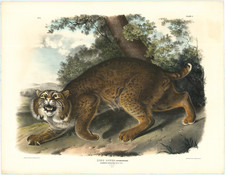
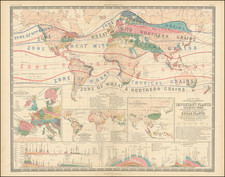
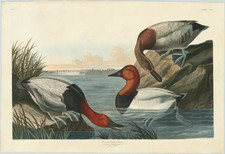
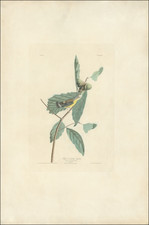
![[ Astronomer William Herschel ] Wm. Herschel](https://storage.googleapis.com/raremaps/img/small/99581.jpg)
